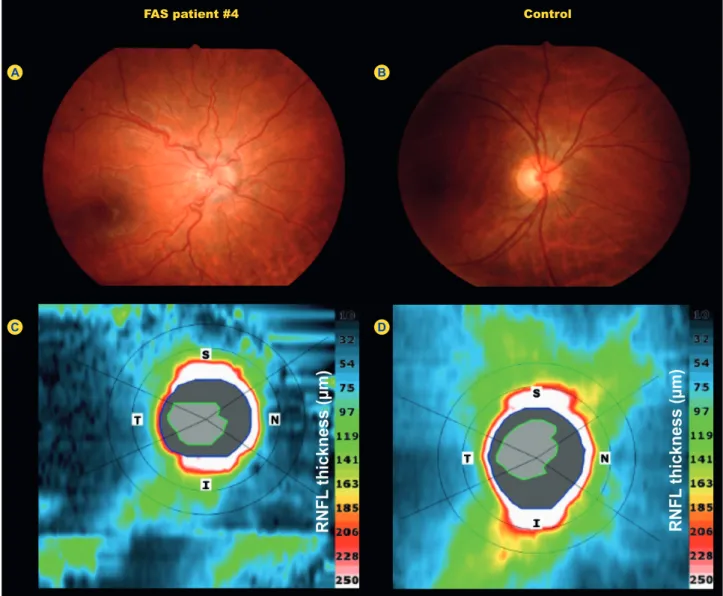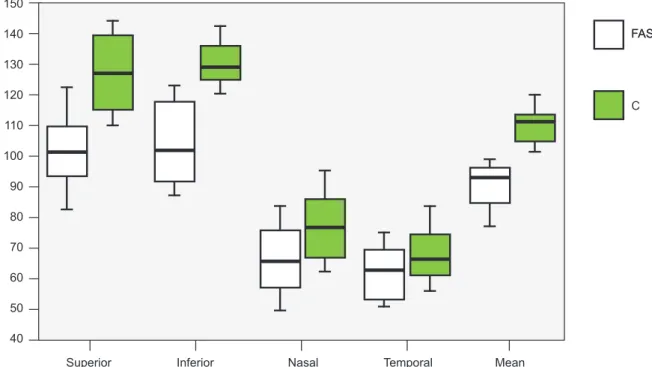Pattern of Retinal Nerve Fiber Layer Thickness Loss in Fetal Alcohol Syndrome: A Spectral-Domain Optical Coherence Tomography Analysis
Texto
Imagem



Documentos relacionados
Este estudo insere-se no campo da didática e tem como principal objetivo analisar as contri- buições da teoria do ensino desenvolvimental para a formação do pensamento teórico,
Valores obtidos por género, ano de escolaridade e grupos com e sem frequência PPO no Teste de Extensão do Tronco inicial e final e respetiva percentagem de alunos na zona saudável
ABSTRACT | Purpose: To (a) determine the normative values for optical coherence tomography (OCT) parameters such as central macular thickness, retinal nerve fiber layer
The central macular, choroidal, and retinal nerve iber layer (RNFL) thicknesses were evaluated using enhanced depth imaging-spectral domain optical coherence tomography in
Purpose: To evaluate the thicknesses of the peripapillary retinal nerve fiber layer (RNFL), ganglion cell complex (GCL), and choroid layer using spectral domain optical
Comparison between retinal nerve fiber layer and macular thickness measured with OCT detecting progressive axonal loss following traumatic optic neuropathy. Arq
Em rios ibéricos, assim como na maioria dos rios temperados, a emergência dos invertebrados mais importantes para a alimentação de peixes, como os Diptera,
Todo conhecimento do ser humano é adquirido de alguma forma e construindo de acordo com a interação com o meio que estão inseridos, assim podemos dizer que